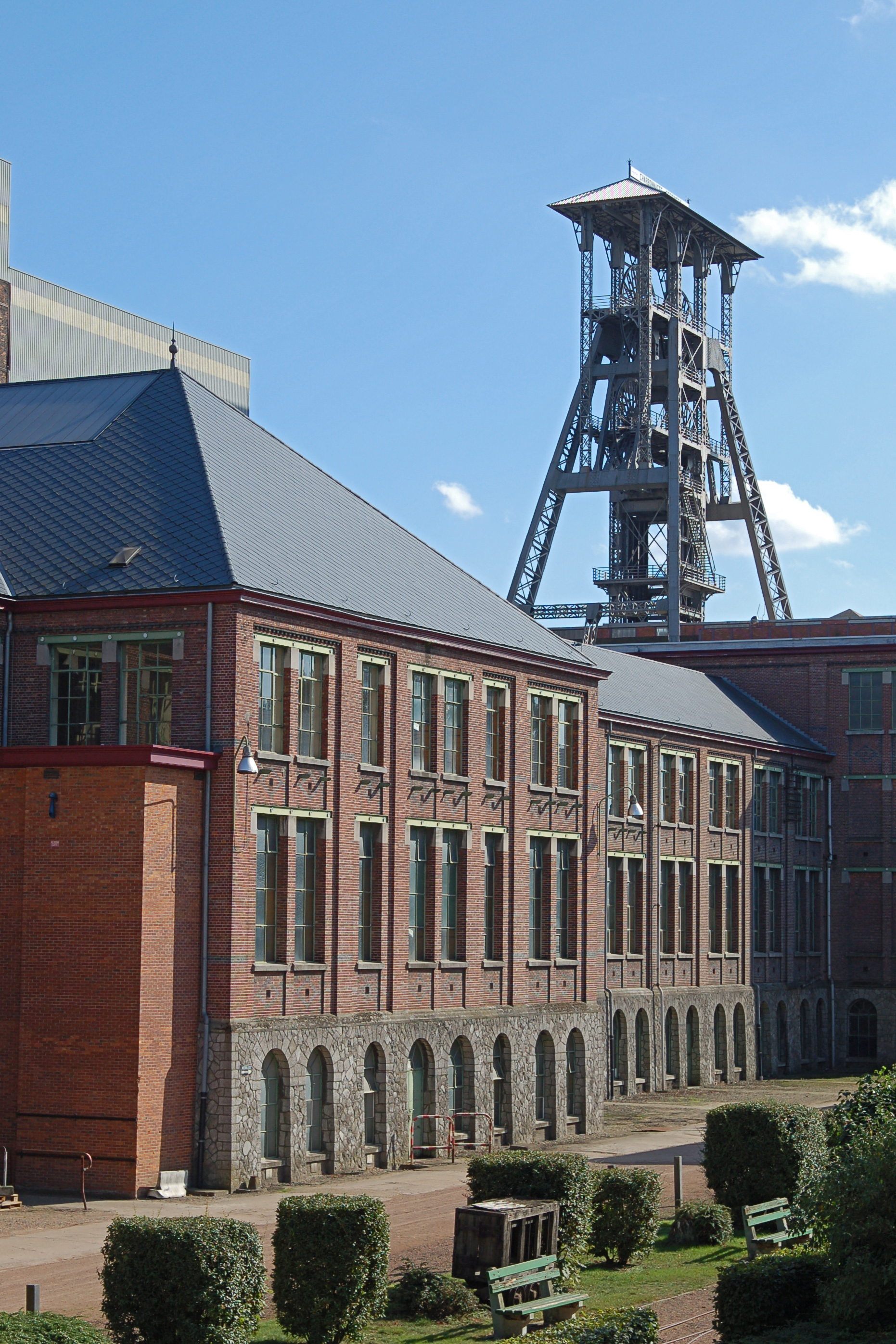|
Tessenderlo
Tessenderlo (; ) is a former municipality in the Belgian province of Limburg. It is where the three Belgian provinces of Limburg, Flemish Brabant and Antwerp meet at the front gate of the Averbode Abbey. The municipality Tessenderlo encompasses the villages of Tessenderlo proper, Schoot, Engsbergen, Hulst and Berg. On January 1, 2006, Tessenderlo had a total population of 16,811. The total area is 51.35 km2 which gives a population density of 327 inhabitants per km2. The name ''Tessenderlo'' means "''(the open place in) the forest of the Taxandrians''". It is along the Albert Canal and the European route E313, the highway between Antwerp and Liège, one of the reasons it was the place for the first Belgian "Industrial Zone of National Importance" in the 1960s. Tessenderlo was the scene of an infamous industrial disaster during World War II, when a stock of 150 tonnes of ammonium nitrate at the chemical plant of ''Produits Chimiques de Tessenderloo'' (now Tessenderlo ... [...More Info...] [...Related Items...] OR: [Wikipedia] [Google] [Baidu] |
Tessenderlo Group
Tessenderlo Group is a multinational industrial group that was founded in Tessenderlo, Belgium, in 1919 as Produits Chimiques de Tessenderloo. The group's areas of business include the production, trading and marketing of crop nutrients and crop protection products, animal by-product processing, and industrial services. Tessenderlo Group is traded on the Euronext Brussels stock exchange. History On Wednesday, 29 April 1942, an enormous explosion of ammonium nitrate destroyed the entire Produits Chimiques de Tessenderloo factory and much of the surrounding town of Tessenderlo. In the incident, 189 people died and more than 900 were injured. The factory was later rebuilt in the same place, a very controversial decision. In 2015, Tessenderlo merged with Picanol. References {{Authority control Chemical companies established in 1919 Multinational companies headquartered in Belgium Belgian companies established in 1919 ... [...More Info...] [...Related Items...] OR: [Wikipedia] [Google] [Baidu] |
Toxandri
The Texandri (also Texuandri; later Toxandri, Toxiandri, Taxandri) were a Germanic people living between the Scheldt and Rhine rivers in the 1st century AD. They are associated with a region mentioned in the late 4th century as Texandria (also Toxiandria; later Toxandria, Taxandria), a name which survived into the 8th–12th centuries. Name Attestations The only inscription that convincingly mentions the tribe is dated 100–225 AD and gives the form ''Texand(ri)''. It was found on an altar at Brocolitia (Carrowburgh Fort) near Hadrian's Wall. A more uncertain inscription from Romania dated 102/103 AD reads ''Texu''. They are also mentioned as ''Texuandri'' by Pliny (1st c. AD), which may suggest that the two forms ''Texuandri'' and ''Texandri'' co-existed already in the late-1st–2nd century AD. The variant form ''Toxiandria'' is only attested once in a 9th-century manuscript of Ammianus Marcellinus' ''Res Gestae'' (ca. 390) to designate the region. The form ''Taxandria'' ... [...More Info...] [...Related Items...] OR: [Wikipedia] [Google] [Baidu] |
Limburg (Belgium)
Limburg (, ; or ; , ), also known as Belgian Limburg, is a province in Belgium. It is the easternmost of the five Dutch language, Dutch-speaking provinces that together form the Flemish Region, Region of Flanders, which is one of the three main Communities, regions and language areas of Belgium, political and cultural sub-divisions of modern-day Belgium. As of January 2024, Limburg had a population of 0.9 million. Limburg is located west of the Meuse (), which separates it from the similarly-named Netherlands, Dutch province of Limburg (Netherlands), Limburg. To the south it shares a border with the French-speaking province of Liège Province, Liège, with which it also has historical ties. To the north and west are the old territories of the Duchy of Brabant. Today these are the Flemish provinces of Flemish Brabant and Antwerp (province), Antwerp to the west, and the Dutch province of North Brabant to the north. Historically Belgian Limburg is roughly equivalent to the Dutch-s ... [...More Info...] [...Related Items...] OR: [Wikipedia] [Google] [Baidu] |
European Route E313
The European route E 313 is a road in Europe and a part of the United Nations International E-road network. Approximately long, it connects the Belgian port city of Antwerp to Liège, the commercial and industrial centre of Wallonia. It runs thus entirely within Belgium: however, it does cross the language frontier within Belgium between the Dutch speaking Flanders and the French speaking Wallonia which affects the roadside route signs and safety-message posters. From the junction at Ranst where it splits from the E34, it follows the Belgian A13. It also serves the same industrial belt as the Albert Canal, the route of which generally runs close to the E 313. For much of the western end of the road the width of the strip of land between the road and the waterway is too narrow for residential use, and the land has instead been put to good use for industrial developments, notably in the area of Herentals. The other major city served by the E 313 is ... [...More Info...] [...Related Items...] OR: [Wikipedia] [Google] [Baidu] |
Ham, Belgium
Ham () is a former municipality located in the Belgian province of Limburg. On January 1, 2006, Ham had a total population of 9,705. The total area is which gives a population density Population density (in agriculture: Standing stock (other), standing stock or plant density) is a measurement of population per unit land area. It is mostly applied to humans, but sometimes to other living organisms too. It is a key geog ... of 297 inhabitants per km2 (746/sq mi). Demographics In August, 2008 the population of Ham exceeded 10,000 inhabitants. Fusion The municipality of Ham was created January 1977 by the fusion of the municipalities of Oostham and Kwaadmechelen. References External links * * - Only available in Dutch Tessenderlo-Ham Former municipalities of Limburg (Belgium) {{LimburgBE-geo-stub ... [...More Info...] [...Related Items...] OR: [Wikipedia] [Google] [Baidu] |
Tia Hellebaut
Tia Hellebaut (; born 16 February 1978) is a Belgian former track and field athlete. She started out in her sports career in the heptathlon, and afterwards specialized in the high jump event. She has cleared 2.05 metres both indoors and outdoors. Hellebaut was the 2008 Olympic champion in the high jump. She was previously the European Champion in 2006 and then the European Indoor Champion in 2007. She won the gold medal in the pentathlon at the 2008 IAAF World Indoor Championships. In addition to these medals, she has participated at the World Championships in Athletics on four occasions. She held the Belgian records indoor long jump and indoor pentathlon until they were broken by Nafissatou Thiam and still holds the Belgian record in both indoors and outdoors high jump. Career Hellebaut worked as a chemist from 1996 to 1999. She started her career as a professional athlete with Atletiek Vlaanderen from 2001 to October 2005. From 1 November 2006 she again became a pro ... [...More Info...] [...Related Items...] OR: [Wikipedia] [Google] [Baidu] |
Kate Ryan
Kate Ryan (born Katrien Verbeeck, 22 July 1980) is a Belgian singer and songwriter, and the winner of a World Music Award. She began her singing career in 2001 and later found fame with a string of dance hits. These included covers, mostly of Mylène Farmer and France Gall, such as "Désenchantée", " Libertine", and " Ella, elle l'a", and Desireless' " Voyage Voyage", as well as new material. Ryan represented Belgium in the Eurovision Song Contest 2006 with " Je t'adore" coming in 12th place in the semi-final. Biography 2001–2004: ''Different'' Ryan was born in the small village of Tessenderlo, Belgium, and grew up in a musical family. At eight years old she learned to play piano and guitar. She received singing and piano lessons from her aunt who teaches at a conservatory. She studied at an art school, specialising in jewellery design. Ryan played frequently in bars and cafés as a teenager, and one night she was offered a recording deal. She became a member of a pop ... [...More Info...] [...Related Items...] OR: [Wikipedia] [Google] [Baidu] |
Schoot (Tessenderlo)
Schoot may refer to: * Schoot (Eindhoven), a quarter of Eindhoven, the Netherlands * Schoot (Tessenderlo), a hamlet near Tessenderlo, Belgium * Schoot (Veldhoven), a hamlet near Veldhoven, the Netherlands People with the surname * Lique Schoot (born 1969), Dutch visual artist * Myrthe Schoot (born 1988), Dutch volleyball player {{disambiguation, surname ... [...More Info...] [...Related Items...] OR: [Wikipedia] [Google] [Baidu] |
Beringen, Belgium
Beringen (; , ; ) is a Municipalities of Belgium, municipality and City status in Belgium, city located in the Belgium, Belgian Provinces of Belgium, province of Limburg (Belgium), Limburg. The Beringen Municipalities of Belgium, municipality includes the town of Beringen proper and the old communes of Beverlo, Koersel, and Paal, Belgium, Paal. History Origins Beringen was already inhabited in Celtic times, as proven by the 1995 archeological finds of gold coins and artifacts on its territory. These date from around 90 BC and are the most northerly late-Iron-Age gold objects found in Europe. Other finds, including of Roman coins, indicate a very early establishment.Beringen historisch The first mention of Beringen dates to 1120 when it was known as 'Beringe', a word derived from the Germanic language, Germanic ... [...More Info...] [...Related Items...] OR: [Wikipedia] [Google] [Baidu] |
Ammonium Nitrate
Ammonium nitrate is a chemical compound with the formula . It is a white crystalline salt consisting of ions of ammonium and nitrate. It is highly soluble in water and hygroscopic as a solid, but does not form hydrates. It is predominantly used in agriculture as a high-nitrogen fertilizer. Its other major use is as a component of explosive mixtures used in mining, quarrying, and civil construction. It is the major constituent of ANFO, an industrial explosive which accounts for 80% of explosives used in North America; similar formulations have been used in improvised explosive devices. Many countries are phasing out its use in consumer applications due to concerns over its potential for misuse.Ammonium nitrate sold by ton as U.S. regulati ... [...More Info...] [...Related Items...] OR: [Wikipedia] [Google] [Baidu] |
Arrondissement Of Hasselt
The Arrondissement of Hasselt (; ) is one of the three administrative arrondissements in the Province of Limburg, Belgium. It is both an administrative and a judicial arrondissement. However, the Judicial Arrondissement of Hasselt also comprises the municipalities of Lommel, Hamont-Achel, Neerpelt, Overpelt, Hechtel-Eksel, Peer and Houthalen-Helchteren in the Arrondissement of Maaseik. Municipalities The Administrative Arrondissement of Hasselt consists of the following municipalities: * As * Beringen * Diepenbeek * Genk * Gingelom * Halen * Hasselt * Herk-de-Stad * Heusden-Zolder * Leopoldsburg * Lummen * Nieuwerkerken * Sint-Truiden * Tessenderlo-Ham * Zonhoven * Zutendaal Per 1 January 2019, the municipality of Opglabbeek was removed from this arrondissement, as it was merged with Meeuwen-Gruitrode into the new municipality of Oudsbergen in the arrondissement of Maaseik. References Hasselt Hasselt (, , ) is the capital and largest City status ... [...More Info...] [...Related Items...] OR: [Wikipedia] [Google] [Baidu] |
Diest
Diest () is a city and municipality located in the Belgian province of Flemish Brabant. Situated in the northeast of the Hageland region, Diest neighbours the provinces of Antwerp to its North, and Limburg to the East and is situated around 60 km from Brussels. The municipality comprises the city of Diest proper and the towns of Deurne, Kaggevinne, Molenstede, Schaffen and Webbekom. As of January 1, 2006, Diest had a total population of 22,845. The total area is 58.20 km2 which gives a population density of 393 inhabitants per km2. History Between 1499 and 1795 the town was controlled by the House of Nassau (as were Breda in the Netherlands, Dillenburg in Germany and Orange in France) which was also the family of the Princes of Orange who at the end of the Napoleonic Wars became in 1815 the kings and queens of the Netherlands after the termination of the Dutch republic at the hands of revolutionary forces in 1795. The most famous representative of the House o ... [...More Info...] [...Related Items...] OR: [Wikipedia] [Google] [Baidu] |



